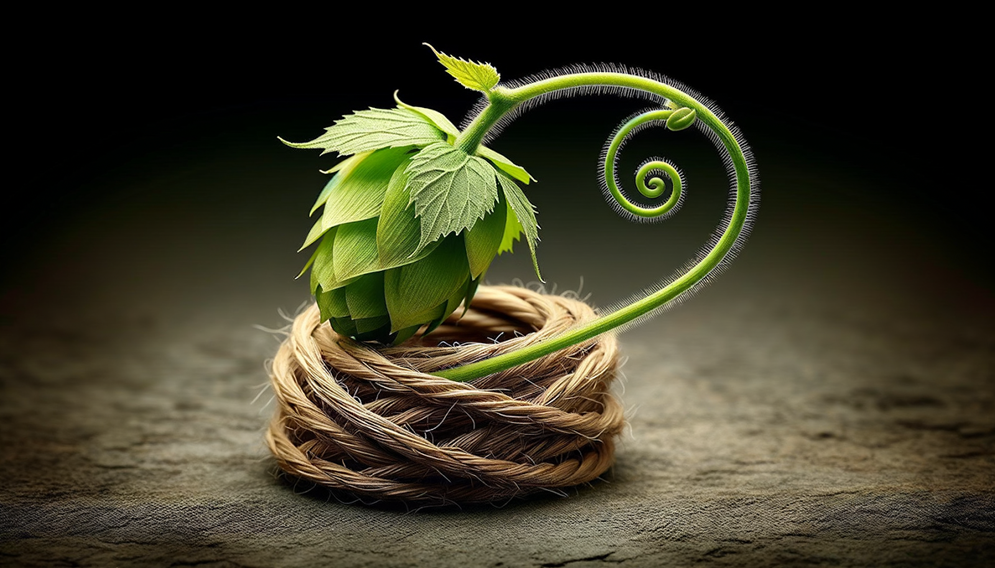One spring morning, I stood in my backyard staring at the bare twine I had hung for my hops. Nothing was climbing it. The young shoots just spiraled aimlessly at the base like they were lost.
I had no idea they were actually doing exactly what they were meant to — they were searching.
The moment I realized hops don’t “grab” — they spiral
In my first year growing hops, I assumed these fast-growing vines (technically, they’re “bines”) would just latch on and take off like ivy. They didn’t.
They circled the base, looking like confused green noodles. I thought something was wrong — until I stumbled on a fascinating truth:
Hops don’t randomly reach out. They search for support using a methodical, mysterious dance called circumnutation.
What is circumnutation, and why does it matter?
If you could shrink yourself down and watch a hopbine in slow motion, here’s what you’d see:
- The tip of the plant performs gentle, circular sweeps in the air, like a radar dish looking for a signal.
- This movement is called circumnutation, and it’s how the plant “feels” out its surroundings.
- Once it brushes up against something solid — twine, a rope, a trellis — it knows it has found a path.
Then comes the twist — literally.
They only spin one way (and that’s not a metaphor)
Here’s a detail that blew me away — hop bines always wrap clockwise.
Not counterclockwise. Not randomly. Always clockwise.
This pattern is so consistent, experienced gardeners intervene early. If young bines haven’t grabbed hold, they gently guide them clockwise around the support — if you go the wrong way, the bine resists or falls off entirely.
But wait — there’s more than just spiraling
The climbing doesn’t just rely on movement. Hops have another clever trick:
- Tiny hooked hairs on the stem help the bine grip tightly to rough surfaces like coir (coconut fiber ropes), trellises, or even fencing.
- This extra grip stabilizes the plant as it climbs, especially on windy days or under the weight of growing cones.
Together, the spiral motion plus those micro-hooks allow the hops to scale impressive heights — up to 30 feet in commercial settings.
The test we ran (and what it taught us)
In a 2020 school garden experiment, a group of 5th graders tested which direction hops preferred to climb. They provided identical poles, set side by side, and manually wrapped two identical young bines — one clockwise and one counterclockwise.
Guess what happened?
The bine wrapped clockwise took off with explosive growth, climbing more than 6 feet in three weeks. The counterclockwise one curled awkwardly, then fell.
Nature knows best — even your seedlings do.
What does this mean for you as a grower?
If you’re trying to grow hops in your yard or even on a small balcony, here’s what you need to know:
- Be patient early in the season. The circling motion is normal — they’re just feeling things out.
- Provide something to hold onto: rope, twine, coir, wire. The texture matters, too — they climb better on rougher surfaces.
- Always guide new bines clockwise around supports during early training.
- Once they catch, watch them go. During peak growth, they can climb 6+ inches in a single day.
you don’t have to “force” growth — just set the stage
Watching hops climb is like watching nature at its most graceful. They don’t fight for progress; they spiral, search, grip, and rise. Slowly. Surely. Consistently.
So if your bines look a little lost now, don’t panic.
Just give them something to hold onto — and trust the spiral.




Leave a Comment